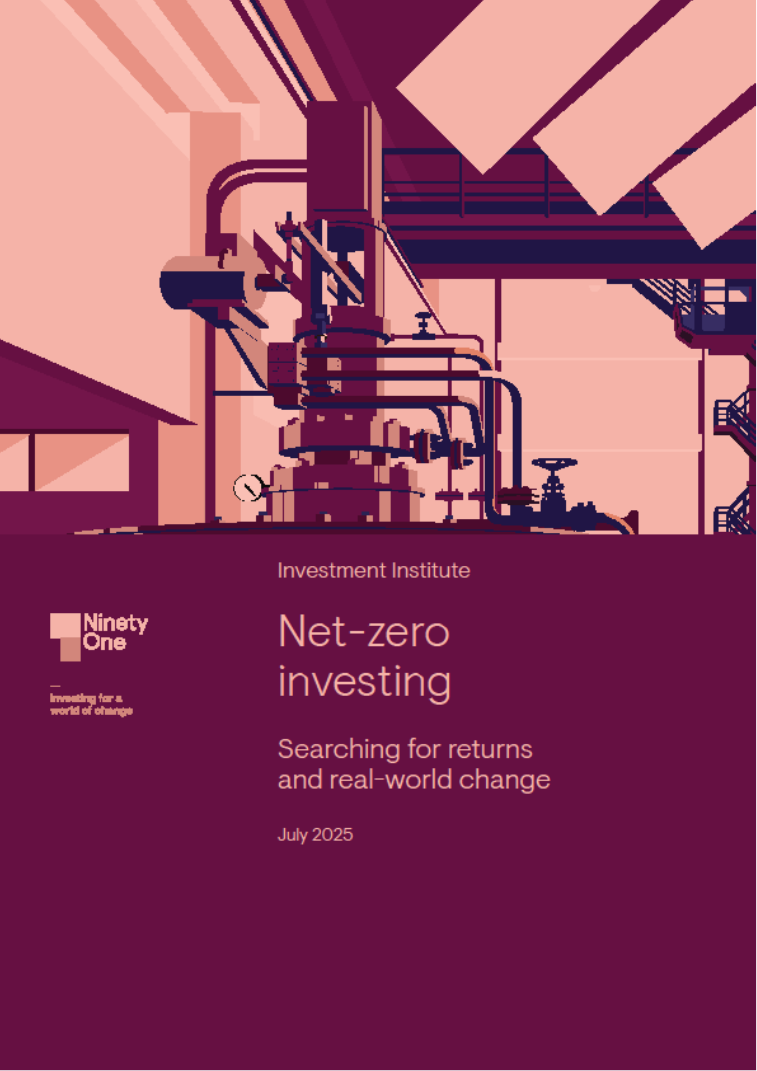Ninety One - Net-zero investing: Searching for returns and real-world change
Shifting from reducing financed emissions to financing reduced emissions.

This paper sets out how we can evolve the approach to net-zero investing to achieve the dual objectives of delivering decarbonisation in the real economy while optimising returns for clients and beneficiaries.
Fast view
- Real-world emissions are rising despite net-zero targets pointing in the other direction. This is not a lack of intent from many investors. It is down to the different ways allocators and investors are setting about their climate strategies.
- Many investors are unsure if their chosen net-zero framework helps reduce emissions in the real world.
- More investors expect it to get increasingly difficult to achieve emissions reductions targets while delivering the best possible returns. Evidence we need to reframe the challenge.
- There is no consistent view on how to solve this. In this paper, we discuss an approach to net-zero investing designed to seek the dual objective of meeting return objectives and maximising real-world change.
- We look at each part of a practical portfolio example including potential allocations to climate solutions and transition investing as well as existing allocations across equities, fixed income and private markets. For each allocation described we identify the appropriate metrics and targets that will help measure and incentivise real-world change.

Download the PDF version here.
Important information
The value of investments, and any income generated from them, can fall as well as rise. Where charges are taken from capital, this may constrain future growth. Past performance is not a reliable indicator of future results. If any currency differs from the investor's home currency, returns may increase or decrease as a result of currency fluctuations. Investment objectives and performance targets are subject to change and may not necessarily be achieved, losses may be made.
